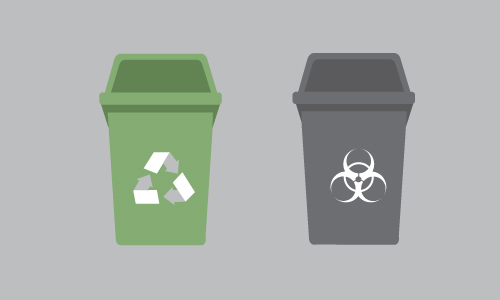US manufacturers spend over $24 billion per year in pollution abatement and continue to bear a significant burden in environmental regulatory costs for waste disposal, wastewater treatment, and air pollution abatement.
In order to reduce cost and stay competitive, manufacturers need to reduce the cost of controlling pollution so they can become more profitable. Here are a few key areas to focus on:
Lowering Cost Of Waste Disposal
One of the most effective ways to lower the cost of waste disposal is to reduce the production and volume of manufacturing wastes and the resources required to process them:
- Increase the efficiency of inventory management: improve supply chain management to avoid stocking excess hazardous materials that may require disposal later on.
- Reduce the use of packaging materials: use a minimum amount of packaging materials while incorporating reusable or recyclable content in your package design.
- Use segregation techniques: remove the hazardous portion of manufacturing wastes from the nonhazardous portion to reduce the volume of waste that requires treatment.
- Recover materials: remove as many reusable materials from wastes using techniques such as electrolysis, filtration, reverse osmosis, and centrifugation to reduce the amount of waste that requires processing.
- Reduce the volume of waste: use industrial shredders to condense asphalt, wood, rubber, and plastics to a fraction of their original size.
- Adopt a closed-loop manufacturing process: recycle materials in the production cycle to minimize waste and extend the lifespan of chemicals.
Reducing Cost for Wastewater Treatment
Wastewater treatment uses a large amount of electricity so manufacturing plants can significantly reduce the cost of pollution control by becoming more energy-efficient in their water treatment facilities:
- Pump water at night and during off-peak hours to take advantage of lower electricity rates.
- Use efficient blue chip motors coupled with variable-frequency drives.
- Install solar panels to generate a portion of the water treatment plants’ energy.
- Use renewable energy sources such as geothermal energy and wind power.
- Purchase power directly from a wholesale supplier.
Lowering Air Pollution Abatement Cost
Many manufacturing processes emit harmful air pollutants that require costly treatments. By reducing the emission of these pollutants, plants can lower the cost of pollution abatement:
- Reduce the use of heavy metals such as chromium, lead, and mercury. For example, use non-hazardous biocides to replace mercury-containing coatings for killing bacteria in paints.
- Lower the emissions of volatile organic compounds (VOC) by covering tanks and containers during processing and storage.
- Reduce the consumption of cleaning solvent by using high-pressure spray hoses to clean tanks and surfaces, choosing cleaners with low toxic air pollutant and VOC content, or dedicating the use of one equipment for each product to minimize cleaning.
- Lower the emission of particle pollutants by using a baghouse to collect dust.
- Upgrade your equipment or look into reformulation to increase efficiency and reduce solvent usage.
One of the most efficient ways to reduce air pollution is to use Regenerative Thermal Oxidizers for VOC emissions control. The reaction eliminates the VOC in the air stream by converting it to CO2, H2O, and heat – thus meeting regulatory compliance.
By identifying the main source of pollution in your manufacturing plant and production process, you can implement the right abatement mechanisms to effectively lower emissions and reduce the cost of pollution control.
Resources:
Reducing Emissions of Hazardous Air Pollutants
Saving Energy and Reducing Costs at Wastewater Treatment Plants




